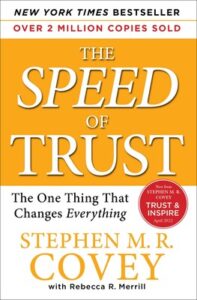Behavior #7: Get Better, page 177.
Summary: Behavior #7 – Get Better
- Continuously improve.
- Increase your capabilities.
- Be a constant learner.
- Develop feedback systems – both formal and informal.
- Act on feedback you receive.
- Thank people for feedback.
- Don’t consider yourself above feedback.
- Don’t assume today’s knowledge and skills will be sufficient for tomorrow’s challenges.
Behavior #7 – Get Better
“The illiterate of the 21st century will not be those who cannot read and write but those who cannot learn, unlearn, and relearn.” – Alvin Toffler
“One of the reasons people stop learning is that they become less and less willing to risk failure.” – John Gardner
- Technology, globalization, and the knowledge-worker economy have increased the degree of difficulty and put us in a more challenging context. To try to apply the same skills we’ve always had in this demanding new context is like trying to apply green-run capabilities on a black-diamond run [Skiing Analogy].
- Unless we improve our capabilities dramatically, we’re going to be inadequate to the challenge. In today’s increasingly competitive environment, it will be very obvious.
Get Better Builds Trust
- Get Better is based on the principles of continuous improvement, learning, and change.
- Like Deliver Results, this behavior is an example of how one of the 4 Cores (Capabilities) can be turned directly into a powerful relationship-building tool.
- When people see you as a learning, growing, and renewing person – or your organization as a learning, growing, and renewing organization – they develop confidence in your ability to succeed in a rapidly changing environment. This enables you to build high-trust relationships and move with incredible speed.
- The opposite of Get Better is entropy, deterioration, resting on your laurels, or becoming irrelevant:
- With the pace of change in today’s world, if you aren’t making a conscious effort to Get Better, you’re not just standing still; you’re getting farther and farther behind.
- You’re becoming less and less relevant because those around you are moving rapidly ahead.
- Simply staying where you are will not inspire trust; it will diminish it.
- Get Better has two common counterfeits:
- The first is represented by the “eternal student,” the person who is always learning but never producing.
- The second is represented by author Frank Herbert’s observation: “The people I distrust the most are those who want to improve our lives but only have one course of action.” It’s trying to force-fit everything into what you’re good at doing.
How To Get Better
- Seek Feedback
- Seeking and effectively utilizing feedback is vital to quality improvement.
- Appropriately seeking feedback and acting on it is the hallmark of learning, growing, and innovating companies.
- Feedback often tells you more about the person who is giving it than about you. However, even this information can be enormously helpful in building trust because it gives you insight into the meaning others are bringing to the relationship and what behaviors make deposits in the Trust Account you share with them.
- You also need to be sure to thank those giving you feedback and let them know how you plan to implement it. When people see you taking their input seriously, it not only increases their trust in you, it also creates an environment of growth and change.
- As we discussed in Deliver Results, however, you need to always be responsible in following through. Otherwise, your expression of intent will create a withdrawal, and you’ll be worse off than had you not solicited feedback in the first place.
- Learn From Mistakes
- If you’re not willing to make mistakes, you’re not going to improve.
- Often people aren’t willing to make mistakes because they’re either afraid to fail or they’re focused on looking good.
- Smart people and smart companies realize that making mistakes is a part of life. They see mistakes as feedback that will help them improve, and they become proficient in learning how to learn from mistakes.
- Most often it is the failures that bring about the breakthroughs and insights.
- Smart leaders create an environment that encourages appropriate risk-taking and makes it safe to make mistakes.
Trust Tips
- On the bell curve, Get Better most effectively involves all 4 Cores:
- You need Integrity to make and keep commitments to improve.
- You’re at the peak when your Intent is to improve your ability to make contributions to the lives of others.
- Get Better involves Capabilities. This includes the capability to set and achieve meaningful goals and also the ability to establish, grow, extend, and restore trust.
- It also involves Results. This is in terms of maximizing the input/output ratio of the effort you invest in getting better, and in the relationship between your level of focus on improvement and the results you’re trying to achieve.
Improving Your Ability to Get Better
- Send out a “Continue/Stop/Start” inquiry to your direct reports, to your customers, to members of your team, or to members of your family. Ask three simple questions:
- What is one thing we are now doing that you think we should continue doing?
- What is one thing we are now doing that you think we should stop doing?
- What is one thing we are not now doing that you think we should start doing?
- The next time you make a mistake, rather than agonizing over it, reframe it as feedback. Identify the lessons from it and ways you can improve your approach to get different results next time.
- If you have a leadership role in an organization, on a team, or in a safe family, take steps to create an environment that makes it safe to make mistakes. Encourage others to take appropriate risks and to learn from failures.



